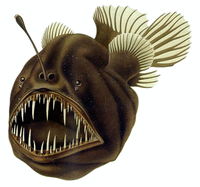
Photo from wikipedia
&NA; Candidatus Scalindua is an exclusive genus of anammox bacteria known to exhibit low diversity found in deep‐sea ecosystems. In this study, the community composition of anammox bacteria in surface… Click to show full abstract
&NA; Candidatus Scalindua is an exclusive genus of anammox bacteria known to exhibit low diversity found in deep‐sea ecosystems. In this study, the community composition of anammox bacteria in surface sediments of the South China Sea was analyzed using high‐throughput sequencing techniques. Results indicated that the dominant operational taxonomic units were related to three different genera of anammox bacteria, identified as Ca. Scalindua (87.29%), Ca. Brocadia (10.27%) and Ca. Kuenenia (2.44%), in order of decreasing abundance. Quantitative PCR analysis of anammox‐specific 16S rRNA and hzsB genes confirmed that the abundance of anammox bacteria in deep‐sea surface sediments ranged from 4.34 × 105 to 3.91 × 107 and 1.62 × 105 to 1.63 × 108 copies per gram, respectively. The ACE, Chao1 and Shannon estimators for anammox bacteria were significantly higher than those reported in previous studies. Pearson correlation and redundancy analyses indicated that depth and temperature were the key factors affecting the distribution, abundance and diversity of anammox bacteria in deep‐sea sediments. We herein report the wide distribution of Ca. Kuenenia and Ca. Brocadia in deep‐sea sediments and provide comprehensive information on the distribution and ecological significance of anammox bacteria in deep‐sea environments. &NA; Graphical Abstract Figure. Higher diversity of anammox bacteria in deep‐sea surface sediments of the South China Sea than previously reported.
Journal Title: FEMS Microbiology Ecology
Year Published: 2019
Link to full text (if available)
Share on Social Media: Sign Up to like & get
recommendations!